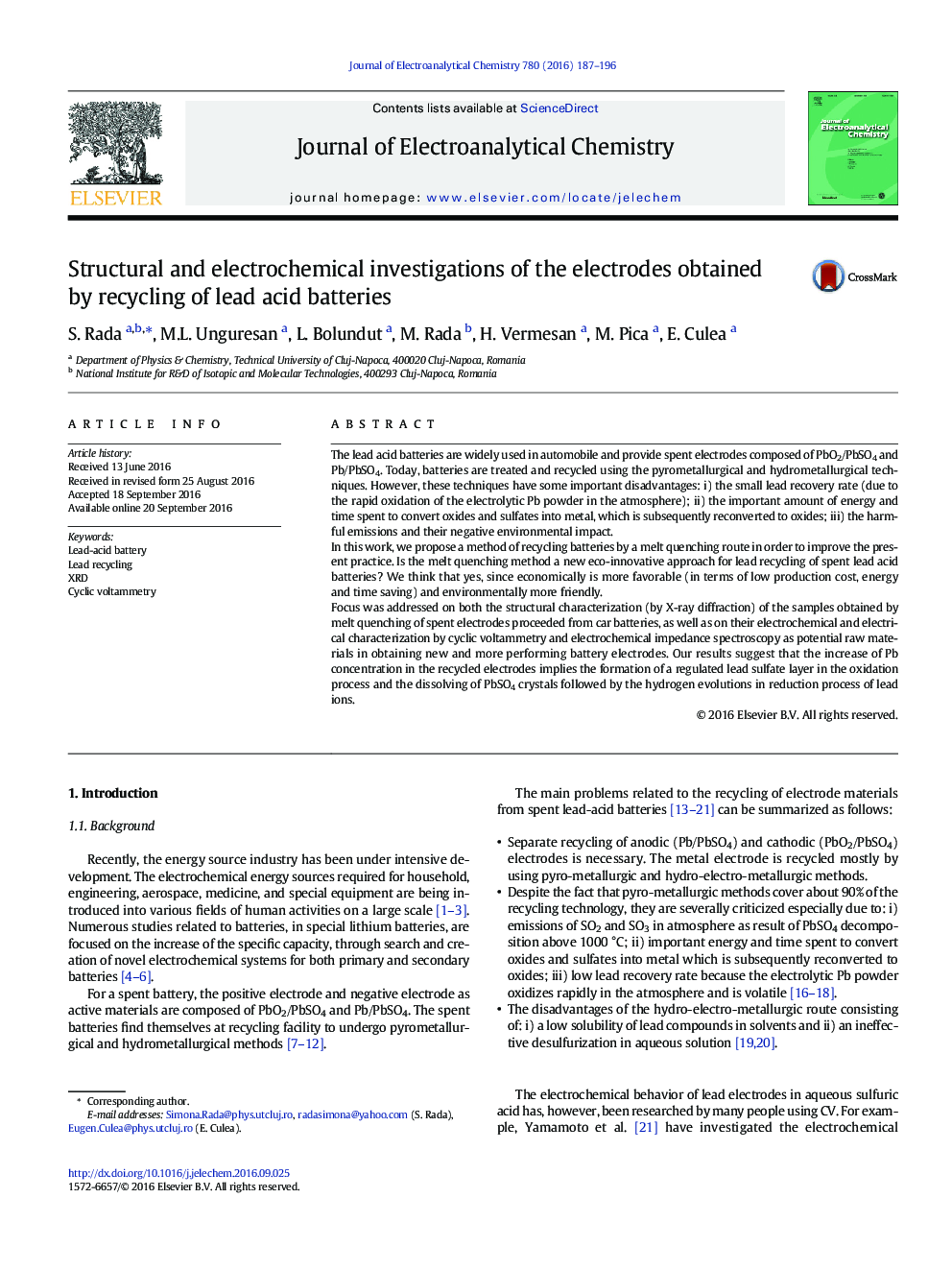| Article ID | Journal | Published Year | Pages | File Type |
|---|---|---|---|---|
| 6477169 | Journal of Electroanalytical Chemistry | 2016 | 10 Pages |
The lead acid batteries are widely used in automobile and provide spent electrodes composed of PbO2/PbSO4 and Pb/PbSO4. Today, batteries are treated and recycled using the pyrometallurgical and hydrometallurgical techniques. However, these techniques have some important disadvantages: i) the small lead recovery rate (due to the rapid oxidation of the electrolytic Pb powder in the atmosphere); ii) the important amount of energy and time spent to convert oxides and sulfates into metal, which is subsequently reconverted to oxides; iii) the harmful emissions and their negative environmental impact.In this work, we propose a method of recycling batteries by a melt quenching route in order to improve the present practice. Is the melt quenching method a new eco-innovative approach for lead recycling of spent lead acid batteries? We think that yes, since economically is more favorable (in terms of low production cost, energy and time saving) and environmentally more friendly.Focus was addressed on both the structural characterization (by X-ray diffraction) of the samples obtained by melt quenching of spent electrodes proceeded from car batteries, as well as on their electrochemical and electrical characterization by cyclic voltammetry and electrochemical impedance spectroscopy as potential raw materials in obtaining new and more performing battery electrodes. Our results suggest that the increase of Pb concentration in the recycled electrodes implies the formation of a regulated lead sulfate layer in the oxidation process and the dissolving of PbSO4 crystals followed by the hydrogen evolutions in reduction process of lead ions.
Graphical abstractDownload high-res image (208KB)Download full-size image
